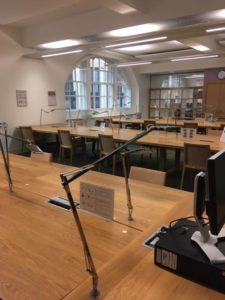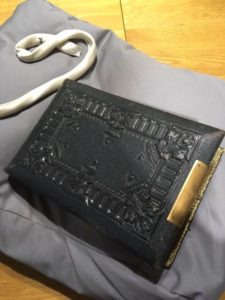Volunteer Ruth Singleton goes in search or May Morris at LSE’s Women’s Library.
There’s something special about old manuscripts. They carry the weight of all the people who have pawed at them over the years, all looking to find something different in the same collection of words. And, to my mind, there is something even more exciting in the personal writing and the private correspondence of people long dead, which has been preserved for one reason or another as a clue to the past.
As I began to sift through the reams of online information stored in relation to May Morris, William Morris’s younger daughter, looking for links to activism and queer communities, I soon found that the London School of Economics’ Women’s Library archives was a treasure trove of letters, photographs and past research. Well, I say that I found this out – in fact I was directed and supported by the archivists in residence, who unearthed a number of artefacts that I otherwise might have missed.
I booked myself in for a Saturday of rummaging and, on arrival, was immediately pleased by the orderly process. It felt like a ritual: discarding everything not required for (or allowed in) the reading room, being shown to my desk and handed the key to my ready-prepared set of resources. It was quiet, with just a handful of studious types, curiously leafing through piles of paper. There was a gentle white-noise hum of monitors, underneath which the muffled conversation of the archivists floated through the air, almost as though the room were alive, calm and relaxed. Nothing more, but the thrum of papers being turned and the keyboard tap-taps. The lights hanging over each desk remind me of something you’d see at the dentist’s, but they prove invaluable for taking photos of my finds.
Two hours pass, absorbed and un-punctuated, then three. Histories intermingle, voices besides the one I am here to find catch my eye – history in the archives is full of the voices of men, letters between them, weighty and formal. The scrawl is sometimes almost illegible, written over here and there by a slightly more recent past. Fleeting references to May Morris shine out unexpectedly like gems, and around them the complex webs of the world she inhabited spin out in different directions. I begin to recognise handwritings, learn what to look for, what is not of importance.
 Another hour slips by as I fall down a rabbit hole of the compiled notes of a previous researcher writing a book on Morris’ embroidery. I get lost in her narrative; her endless letters, the slow and fruitless responses, the sudden burst of activity. The final product. I remember too late that her focus is not the same as mine, but still I have found some revealing passages. I put the box away.
Another hour slips by as I fall down a rabbit hole of the compiled notes of a previous researcher writing a book on Morris’ embroidery. I get lost in her narrative; her endless letters, the slow and fruitless responses, the sudden burst of activity. The final product. I remember too late that her focus is not the same as mine, but still I have found some revealing passages. I put the box away.
I hand my final box back to archivist, and relinquish my key. It has been a useful day and certainly helped me understand how to approach archival research in the future. I’m looking forward to spending more time in London’s archives, these spaces of quiet and concentration, following leads and piecing information together. I wonder if archivists can still hear the gentle white-noise hum in their minds when they go to sleep at night. It’s something I could certainly get used to.
